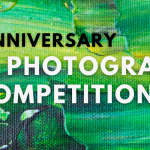මිහිතලයේ ජීවයෙහි පැවැත්ම සඳහා වනාන්තර අත්යවශ්ය වේ. වනාන්තර මඟින් ජීවින් මිලියන ගණනකට වාසස්ථාන සපයනු ලබන අතරම, මිනිසා ජීවත් වන පරිසරයෙහි ගුණාත්මකභාවය වැඩි දියුණු කිරීමට විශාල මෙහෙයක් සිදුකරයි. මේ අතර ජෛව විවිධත්වය ආරක්ෂා කිරීම, ගංගා, ඇළ දොළ ආදියෙහි ජල පෝෂක ප්රදේශ සංරක්ෂණය, ජල චක්රය හා පාංශු චක්රය පාලනය කිරීම සහ දේශගුණික සමතුලිත භාවය රැකගනීම යනාදිය වැදගත් වේ. කෙසේ නමුදු, මානව කටයුතු සංකීර්ණ වීමත් සමග මිනිසා පරිසරයට සිදුකරන මැදිහත්වීම හේතුවෙන් වනහරණය දිනෙන් දින වර්ධනය වෙමින් පවතී. තවද, සංස්කෘතික,
EFL recently commented on the allocation of land for resettlement and development in the Mannar District based on the Report of the Integrated Strategic Environmental Assessment (ISEA) of the Northern Province of Sri Lanka published in the year 2014 by the Central Environmental Authority and the Disaster Management Centre of Sri Lanka. The comments focused on the fact that the report only includes protected areas declared up to 2010, and has failed to make allowances and recommendations for gazetted protected areas
The Vidattaltivu Nature Reserve was gazetted in 2016. But within just one year of its declaration as a protected area, there are plans to degazette a 1000 ha area from its very centre for a fishery project that includes prawn farming; a fishery that has a history of failures in Sri Lanka and across Asia, while also resulting in the widespread destruction of mangroves. The National Aquaculture Development Authority (NAQDA) has developed a proposal for a 1000 ha Aquaculture Industrial Park
The Hakgala Strict Nature Reserve is nestled in the Central Highlands, covering 1142ha of land in both the Nuwara Eliya and Badulla districts. The upper montane rainforests of the reserve are rich in biodiversity, with 40% of woody plants being endemic. These pygmy forests house endemic species such as the highland grey slender lorris and purple-faced langur, as well as Sri Lanka’s apex predator, the Sri Lankan leopard. This protected area is also a catchment for the Uma Oya, which
Tourism has a symbiotic and occasionally parasitic relationship with biodiversity. Biodiversity pulls in visitors with the wildlife and the aesthetic beauty that is associated with pristine natural habitats and in turn, the revenue generated from tourism can go towards conservation efforts and upkeep of protected areas. However, unchecked and unsustainable tourism degrades natural environments, destroying the very thing that attracted visitors there in the first place. Tourism plays a prominent role in Sri Lanka’s post-war economy, generating $US 2.2 billion
Hakgala Strict Nature Reserve (HSNR) is one of the nation’s most important Protected Areas (PA). It is the only SNR in the country at high altitude, and provides exceptional goods and services (to learn more, visit our Biodiversity Conservation page). Not only does HSNR contain unique and endangered biodiversity, it is also the critical watershed for the Uva Basin, which is one of the poorest areas in the country. In addition, the downstream Uma Oya River supplies Mahaweli systems





